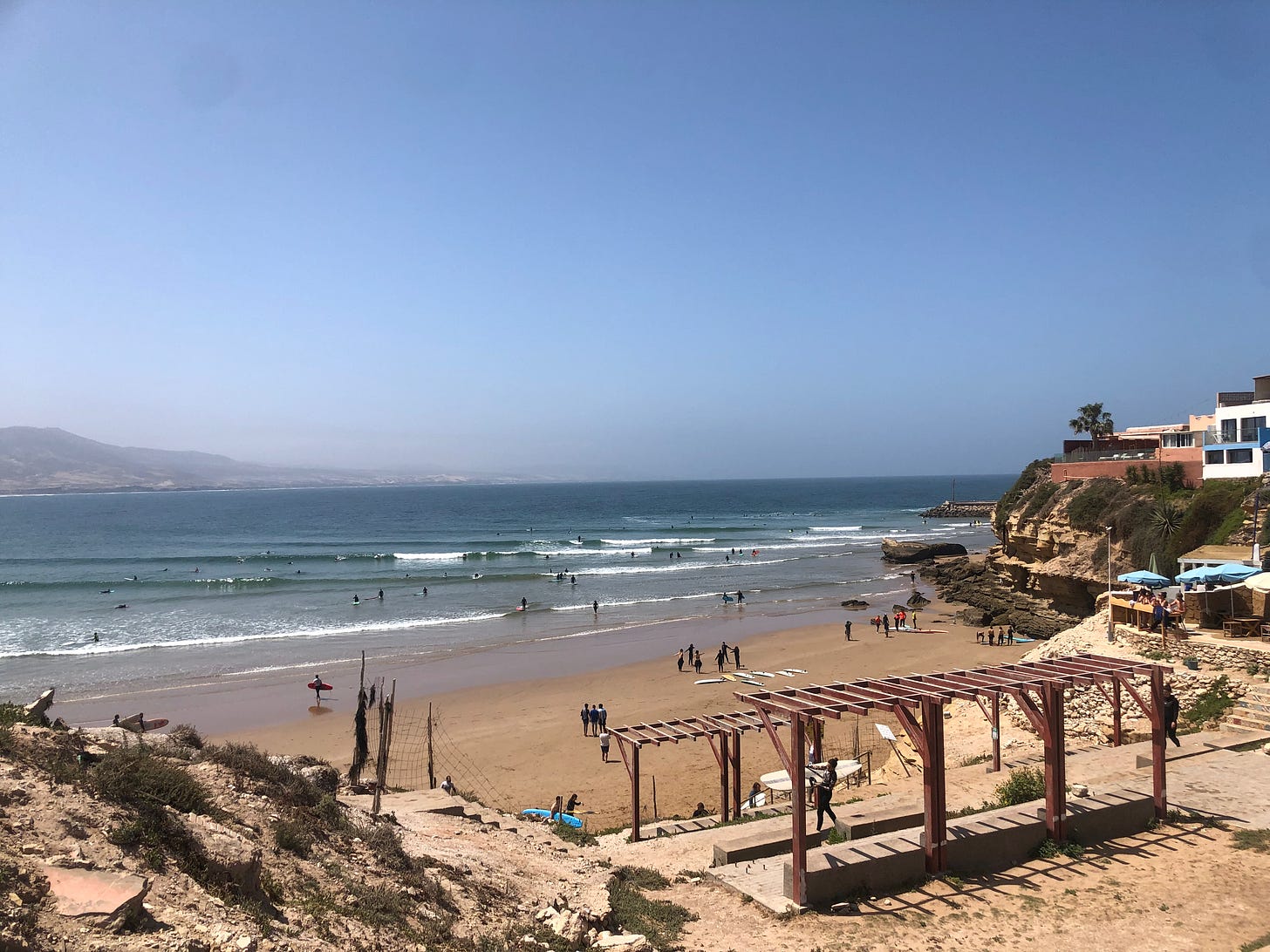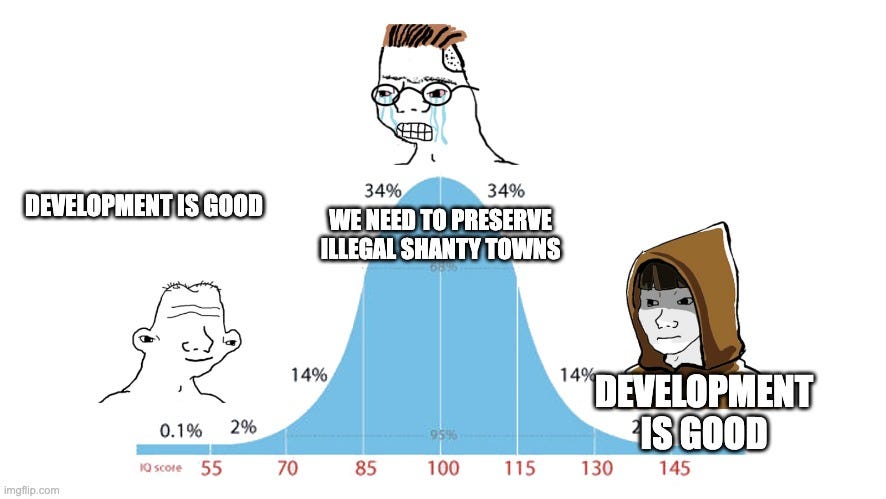The Development of a Moroccan Surf Paradise
TL;DR; Making surf towns like Imsouane richer through development is good, actually. Development through surfing makes towns richer and more tolerant. We should welcome it.
There has been a flurry of well meaning posts denouncing the development of Imsouane, a surf paradise on Morocco’s Atlantic coast. The local authorities, after many years of warnings, recently told locals that they had 24 hours to leave their illegal encampments. After the deadline, the government swiftly started removing the makeshift buildings and shanty town dwellings. Of course, it is harrowing to see people being removed from places they might have spent years living in. However, seeing well intentioned foreigners from wealthier countries complain about the development of rising country is hypocritical and harmful to local development. It’s a “private property for me but poverty for thee” attitude. Those same people would not tolerate it if someone started building a cafe on their front porch. They would not tolerate squatters taking up the beaches of Newquay, Crete or Ericeira. They would demand that their government remove the trespassers. Of course they would! Yet, those same people romanticise the idea of illegal encampments on pristine Moroccan coastline.
What’s wrong with developing one of the greatest surfing coastlines in the world? Don’t Moroccans deserve the fruits of economic development? Don’t get me wrong, I want to visit authentic places as much as the next guy. I hope that the local government in Souss-Masa will respect the local environment and culture. Tolerance for poverty, however, is something we must not abide. Economic hardship must be eradicated wherever it is encountered, whether in Morocco or in Portugal. Surfing is a way for many towns on the Moroccan coastline to enjoy the fruits of development. It is a chance to send their kids to a better school or to learn a new language. To deny the fruits of development to some communities is abhorrent.
Morocco has huge potential in attracting more tourists, particularly surfers and digital nomads. It is blessed with great geography, being within a similar timezone to major European cities while offering a cultural experience that is as far from Europe as you can possibly get on a 1-3 hour flight. Many places on the Moroccan coast have perfect year round weather. The country has a unique architectural and cultural heritage. Imsouane, just north of better known Taghazout, is already getting 100,000 visitors annually and the infrastructure has reached its limit. There isn’t even a cash machine for tourists to withdraw money and there is no place to do laundry. For these simple services, tourists are forced to take a 25 minute taxi journey. It’s a good thing that entrepreneurs will have now have a more conducive environment in which to provide more goods and services. It’s a win-win for the visitors and for the locals.
The surf tourism market is huge and Morocco is ideally placed to take a bigger piece of the pie, with small towns like Imsouane leading the way. Annual surf tourism expenditure is estimated between $31.5 to $64.9 billion across the globe. The large range of the estimate is a reflection on how poorly tracked the industry is, particularly outside of North America. The industry is expected to grow at 6% per year and as countries in the Global South get richer, you can expect to see these countries contributing more towards surfing culture and the surf economy. Currently, the Aussies and North Americans dominate the sport with 75% of world titles but with the development of the sport in Morocco and other rising countries, we could see that change very soon.
It’s not just about surfing. By building the infrastructure to allow more tourists to visit surfing destinations, it opens up other opportunities and promotes tolerance. Surfers need places to eat and sleep. They will buy local good and services and they’ll contribute to the local culture. Surfing, like most sports, is open and welcoming by nature. Surfing, will undoubtedly promote tolerance of different ways of life. To a young local kid in a small town cut off from most of the world, the visiting surfers can we a window into the wider world, an introduction to a new language and new culture.
In a recent Instagram post, Moroccan surfer Ramzi Boukhiam said “I’m not against big projects, but I really feel like we gotta save and keep a few special places that we have along the coast authentic, cultural, charm(ing) villages,”. I’d agree with this sentiment. The threat to the authenticity of small towns is the biggest risk in developing surf spots. Surfers, entrepreneurs and the whole local community should push the the Moroccan ministry of culture to respect the local heritage and preserve the “vibe”. Imsouane is not the first surf town to receive government attention and investment. Over the past decade Taghazout has benefitted from $1 billion in investments resulting in the development of high-end hotels, restaurants and over 2000 apartments. It has transformed from a sleepy fishing town into a world-renowned surf spot. The development has come as a huge boon to the local people but there have been some growing pains. Investors, entrepreneurs and government officials should take lessons from these previous developments and ensure that future investments are sustainable and preserve the authenticity of the local towns.
One day, surfing could be a huge competitive advantage for Imsouane and Morocco as a whole. It could lead to world titles, rich entrepreneurs, more tolerant and open-minded communities and wealthier towns. That is a good thing and we should want more of it. Surfing is a route to more freedom. Surfing is a path to wealthier communities. Surfing is development.



